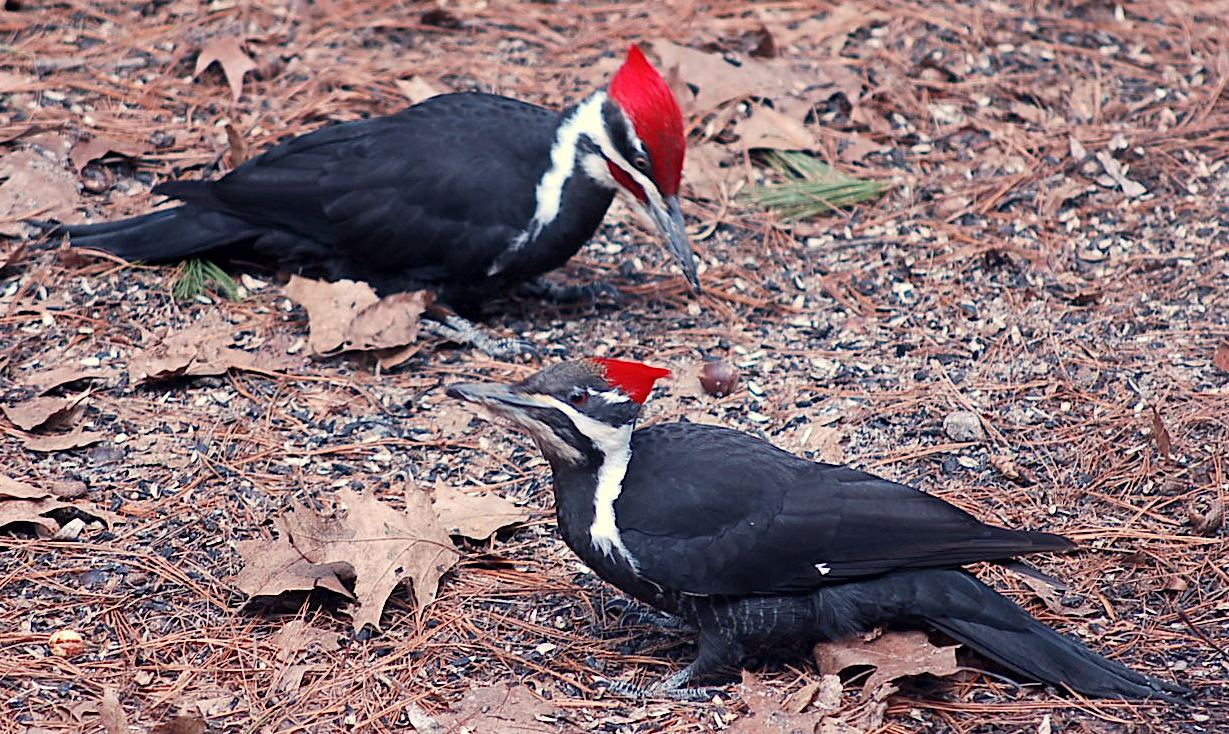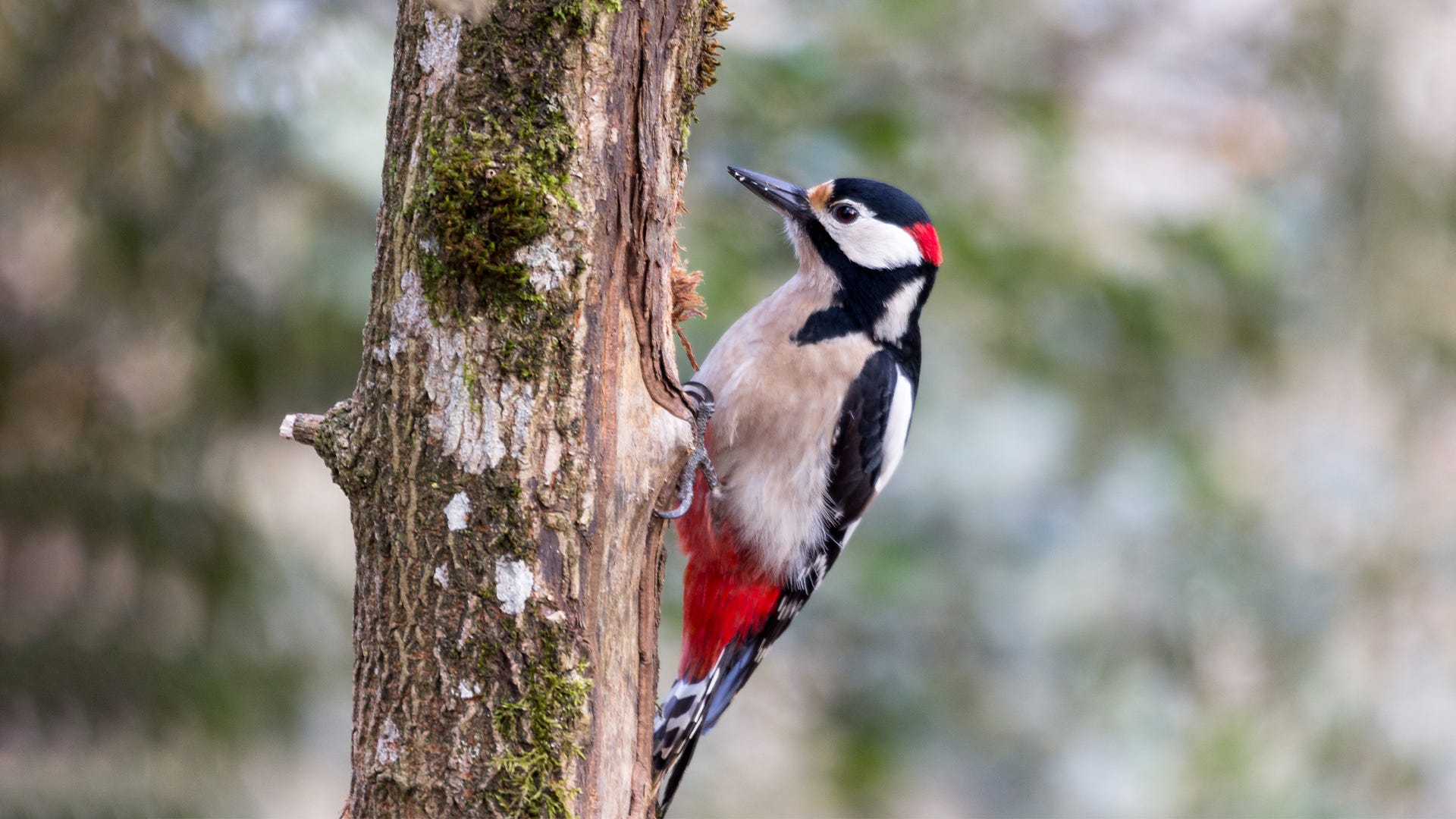Comprehending Woodpeckers in Florida: Actions, Species, and Habitats
Comprehending Woodpeckers in Florida: Actions, Species, and Habitats
Blog Article
Woodpeckers Unleashed: Checking Out the Marvels of These Skilled Tree Climbers
Woodpeckers, with their distinctive markings and balanced drumming echoing via wooded locations, hold an one-of-a-kind area in the bird world - Woodpeckers in Florida. As we delve right into the complex information of woodpeckers' nesting practices, feeding techniques, and the ongoing preservation initiatives to shield these exceptional birds, a deeper recognition for their place in nature unfolds.
Anatomy and Adaptations
When taking a look at the composition and adjustments of woodpeckers, one can observe remarkable attributes that make it possible for these birds to grow in their specialized ecological specific niche. In addition, woodpeckers have zygodactyl feet, with two toes encountering ahead and 2 encountering backwards, giving a company grip on tree trunks while they look for food or drum for communication.
Moreover, woodpeckers have an one-of-a-kind tongue framework that is long, barbed, and sticky, allowing them to remove bugs from holes in timber. This customized adaptation enables woodpeckers to make use of a food source that is hard to reach to several other bird varieties. Generally, the anatomy and adjustments of woodpeckers display the impressive evolutionary remedies that have permitted these birds to grow in their arboreal habitat.
Drumming Behavior
Having actually discovered the composition and adjustments of woodpeckers, the emphasis now moves to understanding their drumming habits, a distinctive facet of their communication and territorial display screens. Drumming is an important type of interaction among woodpeckers, serving multiple functions such as developing territories, bring in mates, and signaling alarm system. Each woodpecker varieties has a distinct drumming pattern that helps individuals recognize participants of their own varieties and identify them from competitors or predators.
Woodpeckers produce drumming noises by swiftly pecking on resonant surface areas such as dead trees, energy posts, and even metal things, producing a series of balanced beats. The intensity and speed of drumming can vary based on the function; for circumstances, a rapid drumming sequence may symbolize aggression in the direction of intruders, while a slower and softer drumming pattern can show courtship (Woodpeckers in Florida). Additionally, woodpeckers may change the regularity and period of their drumming to share specific messages effectively
Nesting Habits
Exploring the nesting habits of woodpeckers discloses fascinating insights into their reproductive habits and environment selections. Woodpeckers are understood for their distinct nesting preferences, commonly excavating dental caries in trees to produce sheltered rooms for raising their young. These tooth cavities offer not just as a nesting site but also as a safe and secure refuge from predators and stormy weather condition.
Woodpeckers exhibit a high degree of integrity Read Full Report to their nesting sites, frequently going back to the exact same area time after time. This actions highlights the significance of ideal habitat availability for their reproductive success. The selection of a nesting site is crucial for woodpeckers, with aspects such as tree species, elevation, and decay phase playing substantial roles in their decision-making process.
Interestingly, some woodpecker types are recognized to excavate several cavities within their area, supplying themselves with alternate nesting choices. This approach might function as a form of insurance coverage versus potential hazards or disturbances to their key nesting website.

Feeding Methods
Woodpeckers use a variety of specialized feeding techniques to procure their main food resources. Among the most unique feeding behaviors of woodpeckers is drumming, which involves quick pecking on trees to discover insects below the bark. This drumming not only aids them find target yet additionally acts as a method of interaction with various other woodpeckers. Woodpeckers have strong, chisel-like beaks that enable them to drill into timber easily. Once an opening is created, they utilize their long, barbed tongues to extract insects such as ants, beetles, larvae, and crawlers. These tongues are coated with sticky saliva visit our website that aids catch the target. Woodpeckers are also recognized to excavate cavities in trees to access concealed insect larvae or sap. Some types, like the acorn woodpecker, store nuts in particularly created openings called granaries. This strategic storing of food assists them endure throughout food deficiency durations. Woodpeckers are genuinely exceptional in their feeding techniques, showcasing flexibility and intelligence in procuring their nourishment.
Preservation Efforts
In the middle of the elaborate feeding techniques showed by woodpeckers, the conservation efforts focused on securing these remarkable birds play a critical function in protecting their habitats and populaces. Woodpeckers encounter different risks to their survival, consisting of habitat loss as a result of logging, climate adjustment altering their communities, and collisions with synthetic structures such as structures and automobiles - Woodpeckers in Florida. Conservationists are proactively working to address these obstacles and guarantee the lasting wellness of woodpecker species

Education and public awareness projects are likewise vital parts of woodpecker conservation efforts. By elevating understanding about the relevance of these birds in preserving healthy woodland environments, conservationists can amass support for environment conservation initiatives and advertise responsible land monitoring practices. Via collective initiatives between scientists, policymakers, and regional areas, we can collaborate to protect a future where woodpeckers thrive in their all-natural environments.
Final Thought

Report this page